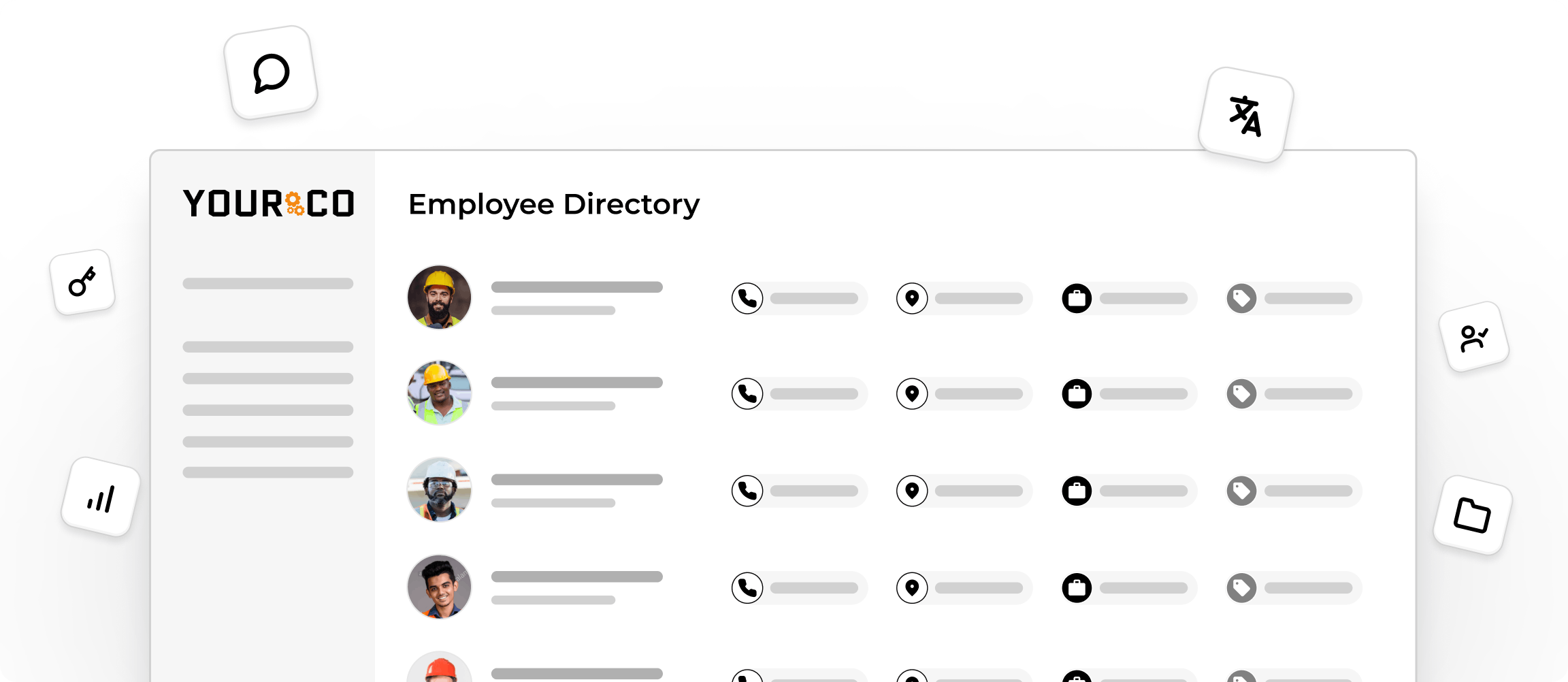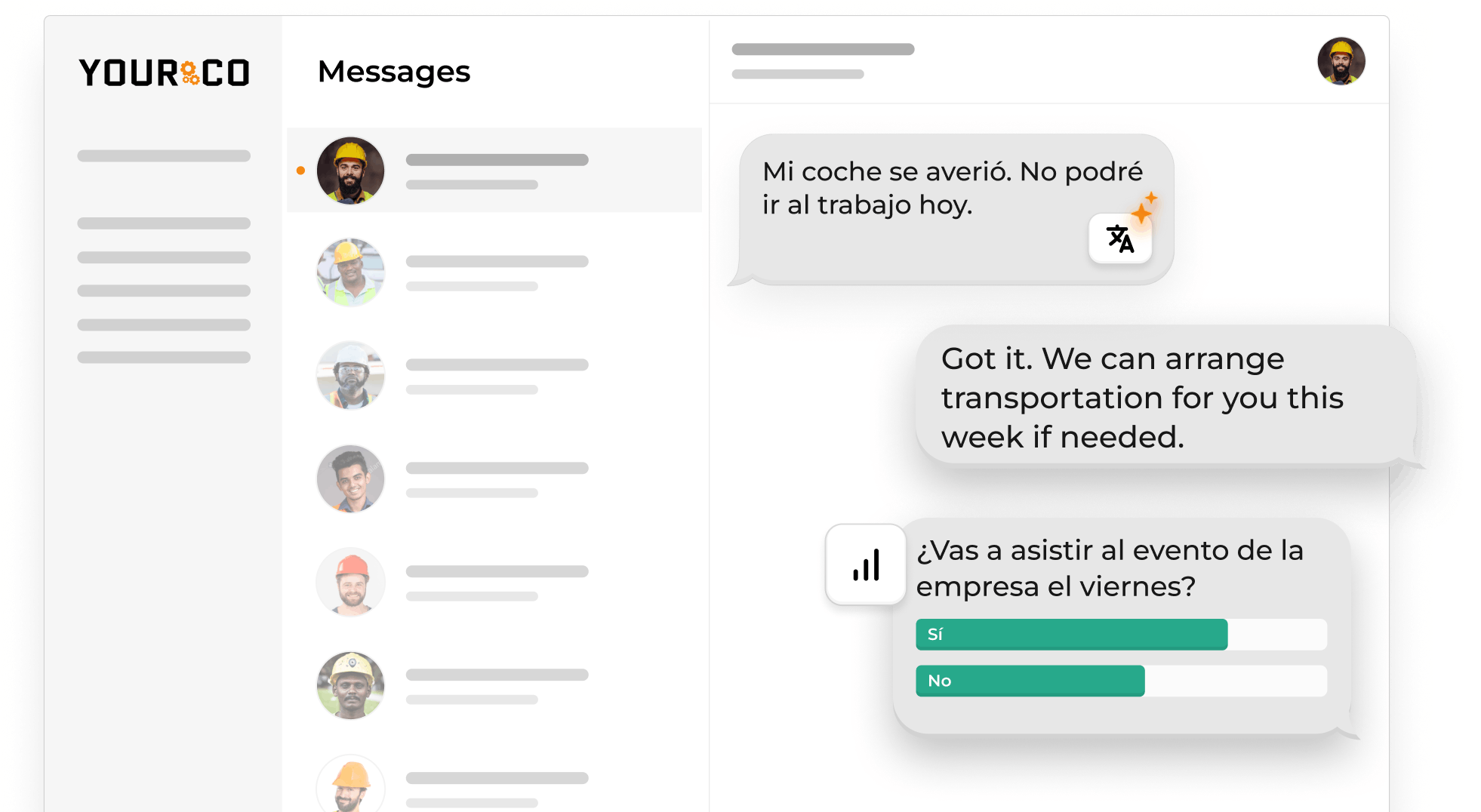How to Develop and Administer Paid-Leave Programs for Frontline Workers


Managing frontline teams means dealing with the stress of last-minute call-offs. Shifts get shuffled, overtime costs climb, and everyone feels the pressure. The problem often isn't that leave policies are missing but that workers can't easily use what's already available.
A paid-leave program that is simple and fair makes all the difference. It helps employees take the time they need while keeping operations running smoothly. Clear policies reduce unplanned absences, improve retention rates, and create a workplace culture where employees feel valued and supported.
In the steps ahead, you'll see how to build and administer a program that works in everyday situations, not just on paper.
Assess Your Current Leave Policies and Identify Gaps
Start by getting a clear picture of what you already offer and where it falls short for the people on the floor. A thorough audit reveals blind spots before you invest in new benefits, ensuring your efforts target real problems rather than perceived ones.
Begin with the paperwork. Pull every policy, union side letter, and local mandate that governs sick days, family emergencies, and personal time. Lay them next to a calendar of the past 12 months and ask: How often did frontline staff still call off unpaid? Looking at actual usage alongside written policies reveals the gap between what you think you offer and what workers experience.
Walk through a comprehensive assessment using these key areas:
- Compare accrual rules for full-time, part-time, and seasonal staff. Any group that waits longer or earns fewer hours will spot the inequity instantly.
- Map the request path: Where does a warehouse associate without email find the form? If the answer involves a clipboard or an office computer, access is already a barrier.
- Review manager notes for patterns of delayed approvals or "lost" requests. Inconsistent enforcement erodes trust and drives unplanned absences.
You won't catch every gap on paper, so collect anonymous feedback. Quick, mobile-friendly surveys or break-room comment boxes surface confusion you never see in metrics. Many frontline workers won't speak up about policy problems unless they feel safe doing so.
Pair that feedback with hard data by reviewing absenteeism and paid-time-off balances by shift and location. When one crew banks hundreds of hours while another burns through theirs, something in the process, or the culture, is off.
Set Clear Goals for Your Paid-Leave Program
Clear goals keep your paid-leave program balanced between compliance costs and frontline well-being. Before choosing accrual rates or drafting forms, decide what you want the program to accomplish and how you'll measure success.
Start by listing the problems you're trying to solve. Maybe unplanned absences drive overtime costs, or burned-out crews quit after busy seasons. Common objectives include fewer surprise call-offs, higher retention, smoother shift coverage, and better morale. For each goal, pick a metric you can track in your HRIS:
- Call-off counts
- Overtime hours
- Engagement scores
- Voluntary turnover
Make every target specific and time-bound. "Cut unplanned absences 15% in six months" works better than "reduce absenteeism." "Reach a 70% usage rate for new caregiving leave by year end" gives you something concrete to track.
Bring the right voices into goal-setting. Frontline workers explain real scheduling hurdles, supervisors flag coverage risks, HR clarifies policy limits, and operations tests the cost model. Open forums or quick text polls help surface priorities you might miss from behind a desk.
Rank your goals with local rules in mind. A site in Missouri and a warehouse in Texas may not face the same requirements. Tracking state-level updates through trusted HR and compliance resources helps you set timelines and budgets that reflect the real operating environment.
Sample objectives vary by industry. A hospital may target "zero missed patient handoffs during parental leaves," while a factory could track "overtime spend held under 5% of wages during peak vacation season." Clear goals like these turn a compliance requirement into a strategic win for you and your team.
Build Leave Policies Around Frontline Realities
Frontline workers face unpredictable schedules, higher injury risk, and limited access to HR tools, so your leave policy must reflect these daily challenges from the start. When policies ignore real working conditions, employees either show up sick or call off at the last minute, creating the exact staffing gaps you want to avoid.
Frontline Teams Need Flexibility
Start by mapping the specific pressures your teams face. Each reality needs a targeted solution in your policy design. Frontline teams need a leave process that's simple to understand, even when requirements can feel complicated. The goal is to stay consistent and accurate without overloading managers or employees with red tape.
Industries with hands-on roles usually have more on-the-job injuries and contagious illnesses than office settings, which drives higher absence rates and makes paid sick time vital for safety and continuity. Many hourly employees also handle family care duties or long commutes, so blanket "full-day only" rules leave them stranded when a two-hour school pickup comes up.
Offering leave in half-day or hourly increments allows someone to handle a doctor visit without burning a whole shift. Building an on-call pool or pre-approved shift-swap process can keep operations running while offering shifts to those who need the hours.
Managers Need Clear, Consistent Policies
Design policies that stay consistent with regulations without overloading managers or employees with red tape. Equip managers with simple reference tools rather than lengthy manuals. A quick checklist helps supervisors spot potential leave situations, document conversations, and know when to escalate questions. Digital systems that automatically track requests, approvals, and notes keep compliance efforts accurate and manageable without endless spreadsheets.
Managers also play a central role. Equip them with a simple checklist to help spot potential leave situations, document conversations, and know when to escalate questions. Quick reference tools work better than lengthy manuals that rarely get opened.
Finally, recordkeeping should be as simple as possible. A digital system that tracks requests, approvals, and notes keeps everything organized and reduces the need for supervisors to manage endless spreadsheets. A quick annual policy review (or sooner if changes arise) helps keep compliance efforts both accurate and manageable.
Simplify How Workers Request and Track Leave
Frontline employees need a leave process they can use in seconds. When requests are simple and trackable, you avoid confusion, missed shifts, and piles of paperwork. The easiest solution is SMS: every phone can text, messages get read instantly, and modern systems route them straight to the right supervisor.
Paper forms and email slow things down, but digital workflows log the request, check balances, and send back an approval. For example, an employee texts "Out sick tomorrow," the manager gets an alert right away, and the system updates the balance — no chasing signatures, no spreadsheets.
Real-time balance tracking matters just as much as the initial request. Instant visibility into remaining hours reduces accidental overuse and keeps payroll clean, while reminders about return dates protect coverage plans and help employees ease back in smoothly.
Finally, remember language access when designing your system. Communication matters just as much as the policy itself. Frontline employees don't sit at desks scrolling through long PDFs. A one-page leave snapshot posted in break rooms, translated into the right languages, and shared by SMS makes the process accessible to everyone. Clear, everyday language, like "You earn one hour of sick time for every 30 hours worked," works better than dense HR jargon.
For approvals, set up canned responses in multiple languages so every worker sees the same clear instructions. By meeting people where they communicate — on their phones — you turn leave administration into a quick, transparent exchange instead of a drawn-out hassle.
Train Managers to Handle Absences Fairly and Consistently
Even the best leave policy fails if supervisors apply it unevenly or without empathy. When frontline employees see different rules for different people, trust erodes and absenteeism climbs.
Start by giving every supervisor clear guidelines for approving or declining leave requests. Spell out acceptable reasons, notice periods, and required documentation with specific examples. A short decision tree helps:
- Covered by sick or family leave? → Approve
- Not covered? → Escalate
Reinforce this with real examples: An overnight stocker calling in with stomach flu, or two cashiers asking for the same Saturday. Each scenario shows managers how to balance coverage needs and fairness.
Next, teach managers how to handle scheduling conflicts when multiple employees request the same time. Encourage them to check the digital schedule, weigh seniority or first-come rules, and offer alternatives such as swapping shifts when needed. A quick script keeps conversations on track: "I see you need Friday off. Let's look at open shifts you can trade so we stay staffed." This simple approach respects the request while protecting operations.
Documentation remains non-negotiable for legal protection and consistency:
- Log every request, response, and follow-up immediately in the leave system
- Use tracking systems to make audits painless and prevent disputes
- Enter notes and upload doctors' letters so records stay complete and secure
Empathy matters just as much as consistency in building trust. Remind supervisors that most people take leave for legitimate reasons, so a brief check-in, such as: "How are you feeling? Anything you need before you're back?", signals care and reduces no-shows.
When managers apply the same rules every time, communicate with compassion, and document each step, your program becomes reliable and trusted, resulting in fewer surprise call-offs, smoother coverage, and a culture where frontline workers feel safe using the benefits you worked so hard to build.
Monitor, Measure, and Improve Your Program
A well-designed leave program isn't "set it and forget it." You need fresh data, honest feedback, and regular tune-ups to keep it working for your frontline teams as business needs and regulations evolve.
Track operational impact. Monitor planned versus surprise absences, identify departments with the most scheduling disruptions, and analyze how leave gets used across full-time, part-time, and seasonal workers. If employees rely heavily on unpaid leave, your program may not be flexible or generous enough.
Measure retention and engagement. Look at how many employees stay twelve months after using leave benefits and track survey scores to catch burnout early. Calculate benefit usage rates — if take-up is low, you may have awareness issues or policy barriers.
Gather qualitative feedback. Use quick polls, end-of-shift check-ins, or short interviews to understand how fair the process feels. Compare results with industry benchmarks to see how you stack up against peers.
Schedule regular reviews. Plan a formal assessment at least once a year, or sooner if laws change. Share findings with supervisors, update policies where needed, and refresh communication workflows so employees always see current information.
Regular measurement and adjustment keep the program relevant, trusted, and cost-effective, protecting both your workers and your bottom line.
Streamline Absence Management with Yourco
Stop juggling last-minute call-offs and start planning shifts with confidence. Yourco turns absence management from reactive chaos into a predictable workflow that works for both managers and frontline employees.
For example, a line cook texts "out sick" at 5 a.m. With our platform, that message routes straight to the right supervisor, logs the time-off record, and pings HR. No paperwork, no email digging, and no app download required. SMS works on any phone, so every frontline employee can request time off the same simple way.
Real-time tracking and notifications cut errors and speed up approvals — exactly what the system delivers.
Yourco syncs with your HRIS and reminds employees of return-to-work dates. For multilingual workforces, AI translations deliver instructions in 135+ languages and dialects. The result is fewer missed shifts, steadier staffing costs, and audit-ready records without extra admin work. The platform handles the communication so you can focus on keeping teams engaged.
Try Yourco for free today or schedule a demo and see the difference the right workplace communication solution can make in your company.
Frequently Asked Questions
How do paid-leave programs affect absenteeism among frontline staff?
Time-off benefits turn chaotic call-offs into planned time away. When workers can stay home sick without losing wages, they give you advance notice and return faster, shrinking those disruptive absence windows. Clear guidelines, regular reminders, and reliable wage replacement transform absenteeism from crisis management into predictable planning.
What's the easiest way to collect leave requests from workers without email?
Text messaging works every time. With SMS, employees send one short text — no logins, apps, or paperwork. Tools like Yourco record requests instantly and notify supervisors. Since every mobile phone handles texts, you reach your entire crew, including those with flip phones or limited data plans.
How can managers balance fairness and flexibility in approving leave?
Start with clear policies that spell out notice periods, documentation needs, and blackout dates. Then train supervisors to use the same checklist for every request. Log each decision, offer alternatives like partial-day leave, and explain the reasoning behind denials. Consistent rules plus empathetic conversations build trust while maintaining coverage.
How often should HR update or review leave policies?
Plan formal reviews at least once a year and provide quick updates whenever laws change. A quarterly scan of new legislation, combined with annual employee feedback, keeps policies current and workers confident.





